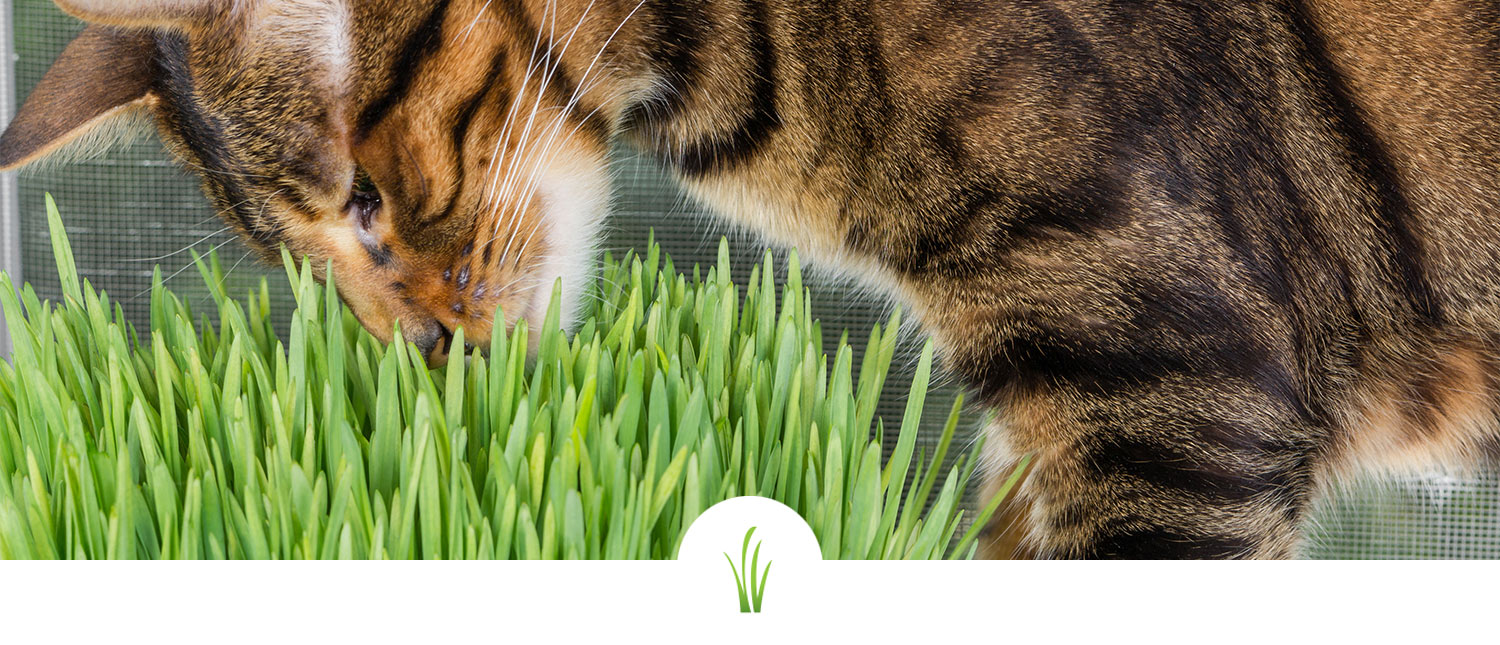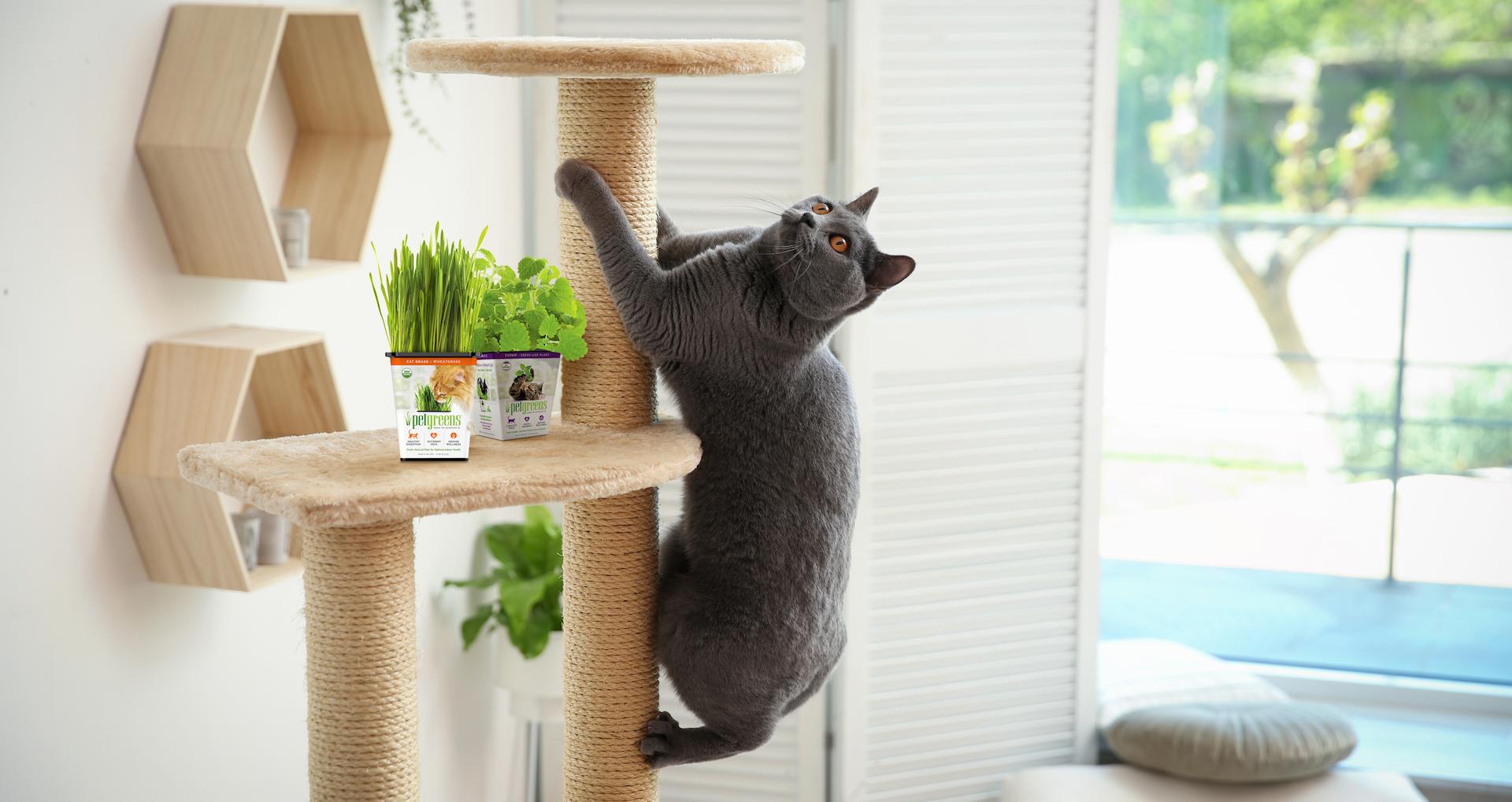Environmental Enrichment: Bringing the Great Outdoors Inside

By Dusty Rainbolt, Award-winning Cat Writer
You’re crazy busy. In addition to the fulltime job, you have soccer games, ballet lessons and a long list of other mandatory activities. Consequently, Fluffy may spend most of his day alone with nothing to do. Boredom leads to stress.
We know in humans, stress can lead to numerous diseases including high blood pressure and idiopathic cystitis (a painful
inflammation of the bladder.) According to Tony Buffington, DVM, PhD, clinical professor at University of California, Davis, stress can cause the same health problems in cats.
Dr. Buffington says you treat feline stress and the health issues that accompany it with exercise and environmental
enrichment. Essentially, provide him with the same opportunities to exercise his body and his brain that he’d have in the
wild.

Like his feral counterparts, inside cats have the innate need to scratch vertical objects, mark territory, hide, climb, run, jump, hunt and eliminate in a clean bathroom. If you don’t satisfy these needs, Fluffy will find a way to do it on his own, and you’re not going to like what he comes up with. His alternative activities will likely include shredding furniture, urine marking, attacking hands, and peeing on the carpet.
Like his feral counterparts, inside cats have the innate need to scratch vertical objects, mark territory, hide, climb, run, jump, hunt and eliminate in a clean bathroom. If you don’t satisfy these needs, Fluffy will find a way to do it on his own, and you’re not going to like what he comes up with. His alternative activities will likely include shredding furniture, urine marking, attacking hands, and peeing on the carpet.
Simulate outdoor activities by:
- Offering hunting opportunities. Cats love to hunt. For every hunt resulting in a meal, an outdoor cat will have 10 unsuccessful attempts says Margie Scherk, DVM,DABVP. Each hunting expedition requires strategizing, running, jumping, climbing trees, hiding in crannies, and monitoring his domain from the safety of a tree limb—times ten. That’s a lot of physical and mental activity.
- Provide toys that mimic prey. Encourage him to stalk and pounce a feather toy. Make it behave like a bird or a mouse—scurry a few steps and stop, then scamper a few more steps. The game is no fun if he never feels the fur or feather in his claws or mouth. Occasionally, let Fluffy catch his prey, and then allow it to wiggle free and dart away. At the end, he “kills” his prize, and it stops moving. Then you serve dinner. Dr. Buffington recommends two 10-minute stalk-and-chase sessions a day to expend excess energy and keep his mind occupied.
During the day, switch from free-feeding to food puzzles. It’s a form of hunting without the messy entrails. Place kibble in a treat ball or mouse hunting feeder. When he’s hungry, he’ll have to bat it around to eat. Fill multiple puzzles with his daily kibble portions, and distribute them throughout the house. Some cats also enjoy small frozen canned cat food balls place on pieces of foil and hidden around the house like a treasure hunt. Make sure your kitty understands the puzzles and is actually eating every day.
Create your own food puzzle by cutting holes in an empty toilet paper roll large enough for the kibble to easily fall through. Fill the tube with kibble and securely tape the ends to contain the food.
- Making your home as three-dimensional as possible. Give him high places to hang out. An expensive cat tree will do the trick, but so will clearing some bookcase shelves and padding them with towels. Create quiet hidey holes. Outside, he’d watch for prey/hide from predators in nooks and crannies. Wicker baskets, cardboard boxes and paper bags (with the handles removed) give Fluffy the illusion of hiding.
- Providing opportunities to scratch. Scratching objects is an instinctive behavior. It provides exercise, stress relief and allows him to mark territory with scent from glands in his paws. You can’t stop him from scratching, but you can direct his attention to something that you want him to scratch. Toss that wobbly foot-tall post you bought for $10. He wants a post tall enough for him to stretch while he’s scratching and heavy and stable enough that it doesn’t move when he gives it a good tug. If you’re strapped for cash, drag in a log with the bark still attached. Many cats love affordable, angled cardboard scratching pads.

- Bringing Outside Inside. Offer Fluffy an inside non-toxic cat garden. For a real scratch and sniff experience, provide live cat grass, catnip, and catmint. Careful about where you buy plants, as many nursery greenery may be treated with pesticides or fertilizers toxic to kitties.
- Setting up an uncovered litter box (es) in quiet, easy-to-access locations. The rule of thumb is one litter box per cat plus one extra. Place them around the house, not side-by-side. In a multicat home, clustered boxes or food bowls are easier for a dominant cat to guard. Fill boxes with unscented, sandy-textured litter and scoop at least once a day.
